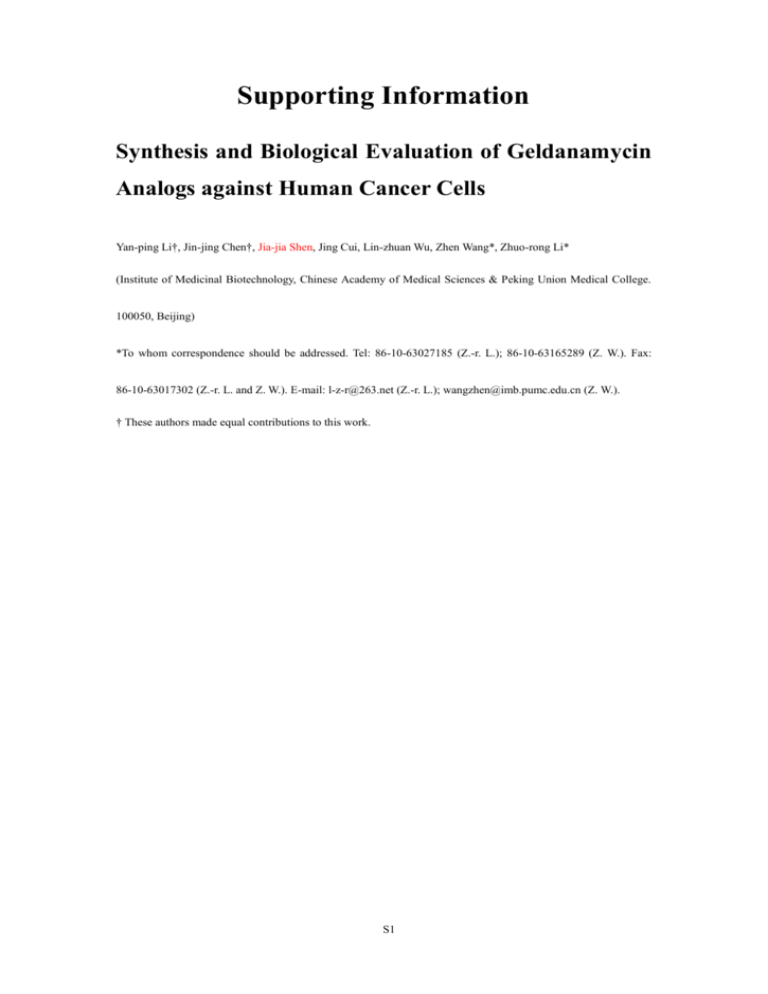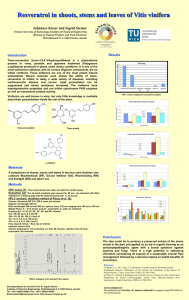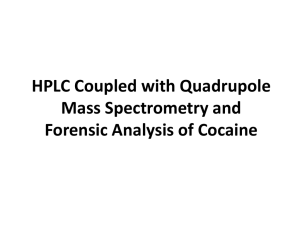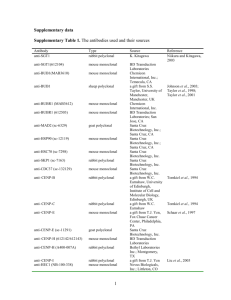**/*=65/35 - Springer Static Content Server
advertisement

Supporting Information Synthesis and Biological Evaluation of Geldanamycin Analogs against Human Cancer Cells Yan-ping Li†, Jin-jing Chen†, Jia-jia Shen, Jing Cui, Lin-zhuan Wu, Zhen Wang*, Zhuo-rong Li* (Institute of Medicinal Biotechnology, Chinese Academy of Medical Sciences & Peking Union Medical College. 100050, Beijing) *To whom correspondence should be addressed. Tel: 86-10-63027185 (Z.-r. L.); 86-10-63165289 (Z. W.). Fax: 86-10-63017302 (Z.-r. L. and Z. W.). E-mail: l-z-r@263.net (Z.-r. L.); wangzhen@imb.pumc.edu.cn (Z. W.). † These authors made equal contributions to this work. S1 Contents 1. HPLC method for water solubility assay 2. The anti-proliferative effect of GA and its analogs in BGC-823 and MDA-MB-231 cells 3. Hsp90 binding assay S2 1. Solubility assay with HPLC 1.1 standard curve preparation The test compound was firstly dissolved in methanol with initial concentration of 2000μg/mL. Then the stock solution was stepwise diluted into 1000, 400, 200, 40, 10 μg/mL for establishment of standard curve. The mobile phase is methanol/water (70/30) with flow rate of 1mL/min. The injection volume was 5μL. The detect wavelength was 340nm. The curve of peak area (y) vs concentration (x) was fitted for linearity (Table S1). 1.2 preparation of test solution The test compound was excessively suspended in distilled water. The mixture was dispersed for five hours on a shaker at 40℃ to obtain a supersaturated solution. After that, 5μL of filtered solution was injected into HPLC apparatus (Agilent 1260 infinity LC) for analysis. 1.3 water solubility of test compounds The water solubility of test compound was calculated using linearity equation according to the peak area of supersaturated solution. The result is shown in Table S1. Table S1 the linearity equation of test compounds Compound R2 Linear equation Water solubility (10 μg/mL) 17-AAG Y=5395.3x+38.68 0.9993 14.7 1a Y=5226.1x+87.899 0.9995 173.2 1b Y=4424.5x-0.2223 0.9995 10.7 2. The anti-proliferative effect of GA and its analogs on BGC-823 and MDA-MB-231 cells. The tested cells were treated with increasing concentrations of GA, 1b, 17-AAG and 2b for 48 h. Cell viability was measured by MTT assays. Results represent the mean ± SD of three independent experiments performed in triplicates and are shown in Figure S1. S3 BGC-823 Cell Viability (% of control) 150 GA 1b 17-AAG 2b 100 50 25 5 1 2 0. 0 0 concentration (µM) MDA-MB-231 Cell Viability (% of control) 150 GA 1b 17-AAG 2b 100 50 25 5 1 2 0. 0 0 concentration (µM) Figure S1 the anti-proliferation activity of GA and its analogs against BGC-823 and MDA-MB-231 cells 3. Hsp90 binding assay Briefly, 30 nmol/L of recombinant Hsp90α (Stressgen Bioreagents Corp) and 5 nmol/L of FITC-geldanamycin (Biomol International) were incubated in a 96-well microplate at room temperature for 3 h in the presence of assay buffer containing 20 mmol/L HEPES (pH 7.3), 50 mmol/L KCl, 5 mmol/L MgCl2, 20 mmol/L Na2MoO4, 1 mmol/L DTT, 0.1 mg/mL BSA, and 0.01% NP40. Following the preincubation, test compounds of different concentrations in 100% DMSO was then added into 96-well plates to finally form volume of 100 μL and 5% of DMSO). The reaction was incubated for 5 h at room temperature and fluorescence was then measured in an Envision 2104 plate reader (Perkin Elmer Life Sciences) with excitation at 490 nm and emission at 520 nm. High and low controls contained no compound or no Hsp90, respectively. GA and radicicol were positive drugs. Coumermycin A1 (CA1) was tested as negative drug. They all were purchased from Sigma. The data S4 were analyzed using GraphPad Prism to generate IC50 values. The result is shown in Table S2. Table S2 the effect of GA analogs on binding of FITC-GA and Hsp90 Compound IC50 (nM) GA 65.24±24.71 Radicicol 97.94±42.45 1a 82.98±20.50 1b 90.06±32.45 CA1 Not active S5

![[supplementary informantion] New non](http://s3.studylib.net/store/data/007296005_1-28a4e2f21bf84c1941e2ba22e0c121c1-300x300.png)









